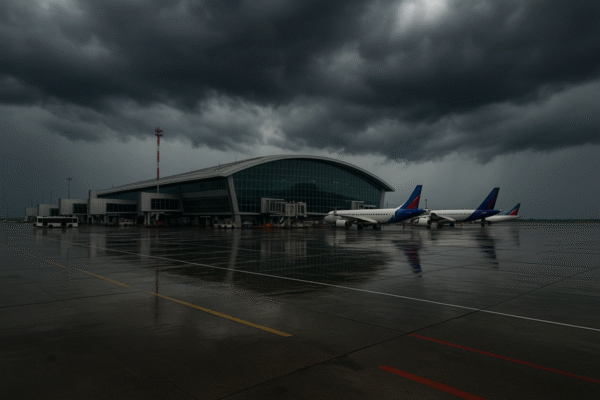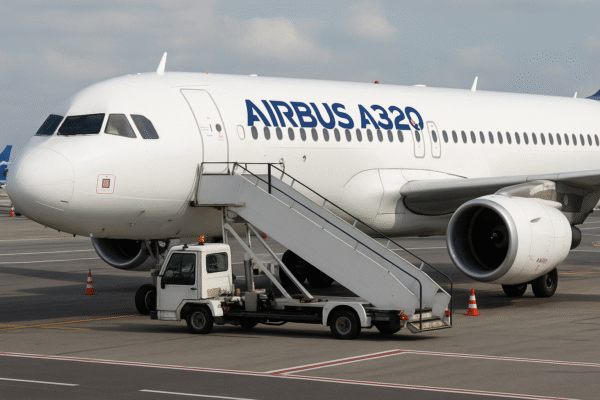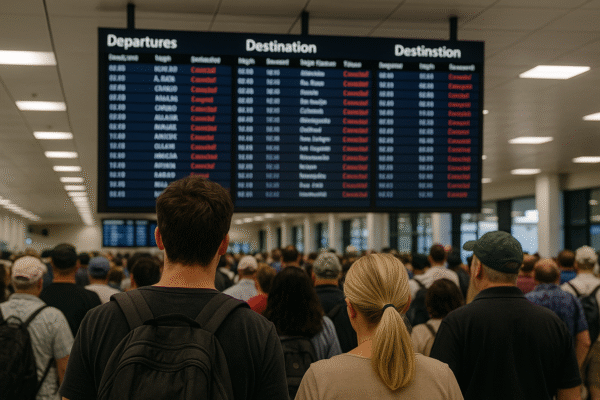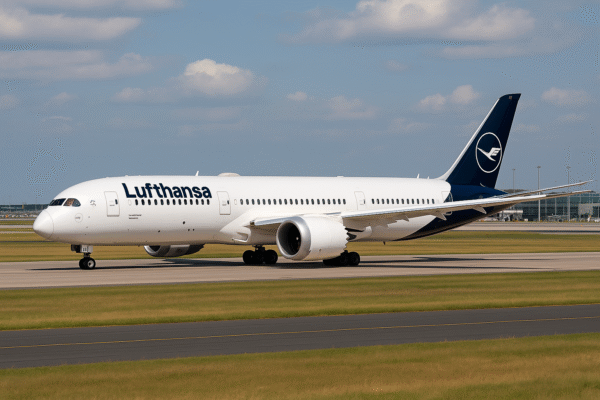On a routine Friday flight from Burbank, California, to Las Vegas, Nevada, Southwest Airlines Flight 1496 narrowly avoided a midair collision after being forced into an abrupt descent. The incident, which occurred on July 19, 2025, resulted in injuries to two flight attendants and has prompted a federal investigation by the U.S. Federal Aviation Administration (FAA). While the aircraft landed safely at Harry Reid International Airport, the near-miss has sparked national concerns about aviation safety in increasingly congested American airspace.
Midair Scare Over the Mojave
Shortly after takeoff, Flight 1496 encountered two consecutive traffic alerts triggered by a nearby aircraft. The flight, operated on a Boeing 737, was cruising at an altitude of 14,100 feet when the aircraft’s Traffic Collision Avoidance System (TCAS) prompted a sharp descent to avoid a potential collision. The plane dropped to 13,475 feet—an alarming 625-foot plunge in just a few minutes.
Flight tracking data from Flightradar24 revealed that the closest separation between the two aircraft was just 4.86 miles horizontally and 350 feet vertically, falling well within the FAA’s minimum separation guidelines. The proximity of the other aircraft remains under investigation, as does the identity of the second plane involved.
Passengers described the sudden descent as terrifying. While no passenger injuries were reported, two flight attendants were hurt due to the abrupt motion and required medical treatment upon landing.
FAA Launches Investigation Amid Safety Concerns
The FAA confirmed that it has opened an official probe into the incident. The agency’s review will focus on air traffic control directives, TCAS response, and pilot actions taken during the event. Investigators will also examine whether proper separation procedures were followed and if communication between the pilots and controllers was effective.
This near-miss highlights the challenges faced by U.S. aviation infrastructure as it grapples with growing passenger volumes and a rise in aircraft movements. According to FAA data, U.S. commercial air traffic reached nearly pre-pandemic levels in 2024, with over 16 million flights recorded—a number projected to rise further in 2025.
The Growing Strain on U.S. Airspace
America’s skies are becoming increasingly crowded, especially over high-traffic corridors like Southern California and the Las Vegas basin. Southwest Airlines, the largest domestic carrier in the U.S., operates over 4,000 daily departures and is heavily concentrated in Western states. As such, its operations are particularly vulnerable to airspace congestion and coordination challenges.
The FAA has been upgrading the National Airspace System under its NextGen initiative, which integrates satellite-based navigation, data-sharing technologies, and improved surveillance. However, critics argue that implementation is lagging behind the growth of air traffic, particularly in the western U.S.
Could Artificial Intelligence Improve Air Traffic Management?
This incident has also reignited debate on the role of advanced technology in aviation safety. While TCAS and human-controlled air traffic remain essential, experts suggest that artificial intelligence (AI) and predictive analytics could transform how flight risks are identified and managed.
For instance, AI-enhanced systems could process millions of data points in real time, alerting controllers and pilots before two aircraft come dangerously close. Unlike traditional TCAS systems, which only alert after a conflict is imminent, predictive systems could reroute aircraft automatically or provide optimal altitudes to maintain safe separation.
Incorporating AI into flight route management would also reduce controller fatigue and allow for faster decision-making during high-stress situations. NASA’s Air Traffic Management-eXploration (ATM-X) program and FAA-backed trials are already exploring such integrations for future deployment.
Emphasizing the Human Factor: Training and Coordination
Technology alone isn’t enough. The Southwest Airlines event highlights the crucial role of pilot training and inter-agency coordination. Pilots must react instantly to in-flight alerts, execute maneuvers flawlessly, and communicate with controllers while managing passenger safety.
In this case, the pilot’s rapid response may have averted a potential disaster—but training must evolve to handle increasingly complex airspace conditions. Experts recommend regular simulator training focused on emergency scenarios, including TCAS resolution advisories and manual navigation in unpredictable environments.
Additionally, FAA coordination with international carriers and shared airspace stakeholders will be vital. The near-miss shows how vulnerable even short-haul domestic flights can be if communication or system automation fails at any point.
Industry-Wide Wake-Up Call
This incident is far from isolated. In 2023, the FAA reported over 1,500 near-miss incidents, a number that raised alarms in both Congress and the National Transportation Safety Board (NTSB). In response, lawmakers have pushed for increased funding for aviation safety, including hiring more air traffic controllers and accelerating NextGen modernization.
The Transportation Security Administration (TSA), while not directly involved in air traffic, has also expressed support for enhanced monitoring systems to ensure passenger safety before takeoff. Furthermore, the Department of Transportation may consider issuing new protocols for conflict resolution across congested corridors, particularly in the Western U.S.
What This Means for Future Travelers
For travelers flying between California and Nevada, or anywhere across the increasingly busy U.S. air network, the Southwest Airlines incident is a stark reminder of the risks and rapid response mechanisms involved in commercial aviation. While modern aircraft and trained pilots remain highly reliable, continued innovation in safety systems is essential to meet the demands of today’s skies.
Passengers can rest assured that the FAA’s investigation will guide new policy changes and potentially accelerate tech adoption in air traffic systems. At the same time, Southwest Airlines and other carriers are expected to review their internal safety protocols to prevent similar incidents in the future.
As U.S. aviation pushes toward a data-driven, AI-enhanced future, safety must remain at the core of innovation. This near-collision may well become a catalyst for meaningful reform—one that ensures that what happened over the Mojave Desert on July 19 never happens again.
For more travel news like this, keep reading Global Travel Wire



















